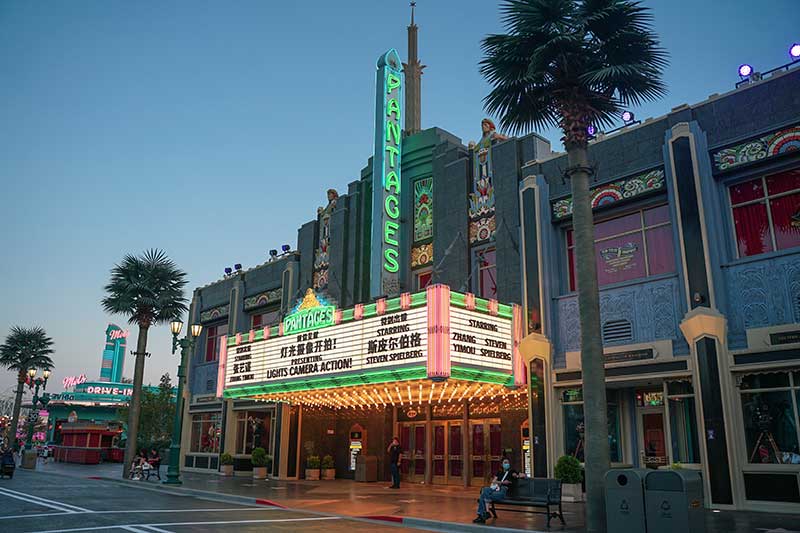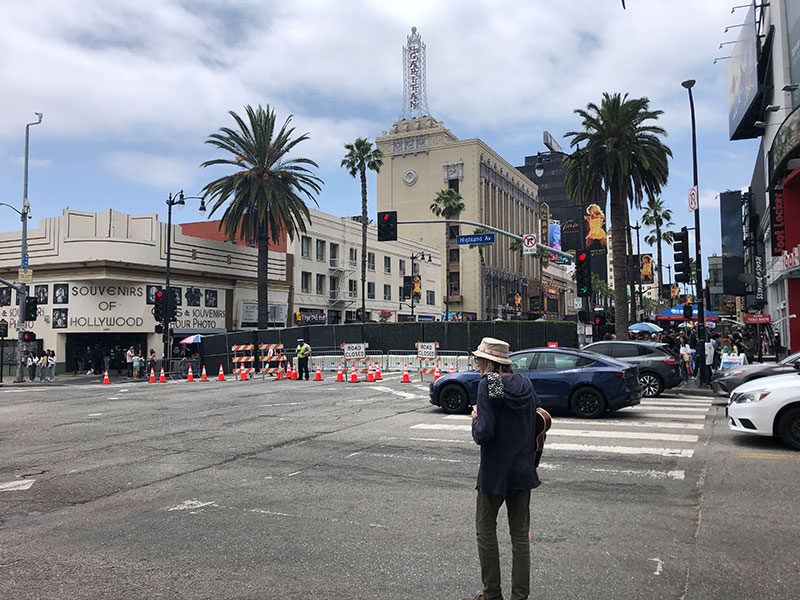Hollywood Tours Nearby Could Catch a Glimpse
The latest honoree of a star on Hollywood’s Walk of Fame is offbeat director John Waters. While not a mainstream filmmaker, Waters has gained quite a cult following over the four decades he’s been active. Star Track Tours was on hand for the ceremony and it goes to underscore our advice to those visiting Hollywood: plan your tours of Hollywood on days like these where you can get a glimpse of a celebrity AND see them receive their own star!

John Waters honored on Hollywood Walk of Fame star tour
A Bit About John Waters
John Waters is a name synonymous with counterculture cinema, a legendary filmmaker whose career has spanned over five decades, marked by a unique blend of audaciousness, irreverence, and subversive storytelling. Born on April 22, 1946, in Baltimore, Maryland, Waters emerged as a trailblazing director, writer, and producer who challenged societal norms and transformed the landscape of independent cinema. His unapologetic embrace of the bizarre, taboo, and provocative has earned him a cult following and secured his place as a cinematic icon.
Early Life and Influences
John Waters’ upbringing and surroundings greatly influenced his artistic sensibilities. Raised in a middle-class family in Baltimore, he grew up amid the social and cultural transformations of the 1960s. Waters developed an early fascination with the grotesque and the unconventional, drawing inspiration from his love for the bizarre and his experiences in the countercultural scene.
One of Waters’ most significant influences was the works of filmmaker Herschell Gordon Lewis, known for his exploitation films like “Blood Feast” and “Two Thousand Maniacs!” Lewis’s gleeful embrace of gore and shock value left an indelible mark on Waters, inspiring him to push the boundaries of filmmaking.
The Birth of the Dreamlanders
In the late 1960s, Waters assembled a group of like-minded friends and collaborators who would become known as the Dreamlanders. This ragtag ensemble, which included iconic figures like Divine (Glenn Milstead), Mink Stole, and Edith Massey, became the core cast of many of Waters’ early films. Their commitment to Waters’ vision and willingness to embrace outrageous and unconventional roles helped define the distinctive style of his movies.
The Underground Era: Early Works
Waters’ filmmaking journey began in the early 1960s with short films like “Hag in a Black Leather Jacket” (1964) and “Eat Your Makeup” (1967). These early works were characterized by their low budgets, guerrilla-style filmmaking, and a penchant for pushing societal boundaries. It was during this period that Waters coined the term “Trash Cinema,” embracing the unconventional and the taboo as essential elements of his craft.
However, it was his feature-length debut, “Mondo Trasho” (1969), that marked the beginning of his notoriety as a filmmaker. This film, along with subsequent works like “Multiple Maniacs” (1970) and “Pink Flamingos” (1972), catapulted Waters into the underground cinema scene and earned him a cult following.
“Pink Flamingos,” in particular, is a watershed moment in Waters’ career. Notorious for its explicit content and provocative subject matter, the film shocked audiences with its depictions of deviant behavior and challenged conventional notions of taste and decency. Divine’s role as the film’s central character, Babs Johnson, solidified the performer’s status as an iconic figure in underground cinema.
The Transition to the Mainstream: “Polyester” and “Hairspray”
Waters’ early films were celebrated within the underground and counterculture circles but often faced censorship and legal challenges due to their explicit content. It wasn’t until the release of “Polyester” in 1981 that Waters began to transition into more mainstream filmmaking.
“Polyester” was a departure from Waters’ earlier works, featuring a more structured narrative and higher production values. Starring Divine and Tab Hunter, the film still retained Waters’ irreverent humor but was released in “Odorama,” a gimmick that provided scratch-and-sniff cards to the audience, adding an interactive element to the viewing experience.
However, it was “Hairspray” (1988) that marked Waters’ full-fledged entry into mainstream cinema. This musical comedy, set in 1960s Baltimore, tackled issues of race and integration with a sense of humor and heart. Starring Ricki Lake, Divine, and Debbie Harry, “Hairspray” was a critical and commercial success, earning Waters a wider audience and greater recognition as a filmmaker.
Cultivating Mainstream Success
With “Hairspray” paving the way, John Waters continued to navigate the intersection of underground and mainstream cinema, consistently delivering films that retained his signature style while appealing to a broader audience. “Cry-Baby” (1990), a campy musical comedy starring Johnny Depp, further solidified Waters’ status as a director capable of bridging the gap between subversive and mainstream tastes.
Waters’ films of the 1990s, such as “Serial Mom” (1994) and “Pecker” (1998), continued to explore themes of suburban dysfunction and societal hypocrisy while attracting a growing fan base. These films also featured an evolving cast, including established actors like Kathleen Turner and Edward Furlong alongside Waters’ longtime collaborators.
The Legacy of Divine
A significant part of John Waters’ career and legacy is intertwined with the iconic drag performer Divine. Divine, born Glenn Milstead, was Waters’ muse and appeared in many of his early films, becoming a symbol of countercultural rebellion and pushing the boundaries of gender and sexuality in film.
Tragically, Divine passed away shortly after the release of “Hairspray,” leaving a void in Waters’ creative world. However, Divine’s impact on both Waters’ work and the broader LGBTQ+ community remains immeasurable. Divine’s fearless performances challenged societal norms and paved the way for greater LGBTQ+ visibility in film and popular culture.
The 21st Century: Continuing Creativity
John Waters’ filmmaking career continued into the 21st century with projects like “Cecil B. Demented” (2000) and “A Dirty Shame” (2004). While these films may not have achieved the same level of mainstream success as some of his earlier works, they continued to showcase Waters’ unapologetic approach to storytelling and his penchant for pushing boundaries.
Waters also explored other creative outlets, including writing books, hosting a one-man show, and participating in visual art projects. His diverse artistic endeavors allowed him to reach new audiences while maintaining his status as an iconoclast in the world of cinema.
Awards and Recognition
Over the course of his career, John Waters has received numerous awards and honors for his contributions to film and art. In 2019, he was honored with a Special Teddy Award at the Berlin International Film Festival for his outstanding LGBTQ+ advocacy in cinema. Waters’ impact on LGBTQ+ representation in film is undeniable, and he continues to be celebrated for his fearless approach to storytelling.
John Waters’ career is a testament to the power of independent cinema and the ability of one filmmaker to challenge societal norms and push the boundaries of artistic expression. From his early underground works that shocked and delighted audiences to his successful forays into mainstream cinema, Waters has remained a true maverick of filmmaking.
His collaborations with the Dreamlanders, his fearless embrace of taboo subjects, and his willingness to confront societal norms have left an indelible mark on the world of cinema. Waters’ influence can be seen in the work of countless filmmakers who have been inspired by his audacity and irreverence.
As John Waters continues to create and inspire, his legacy as a provocateur and a visionary filmmaker endures, reminding us of the power of cinema to challenge, entertain, and provoke thought. In a world that often craves conformity,








